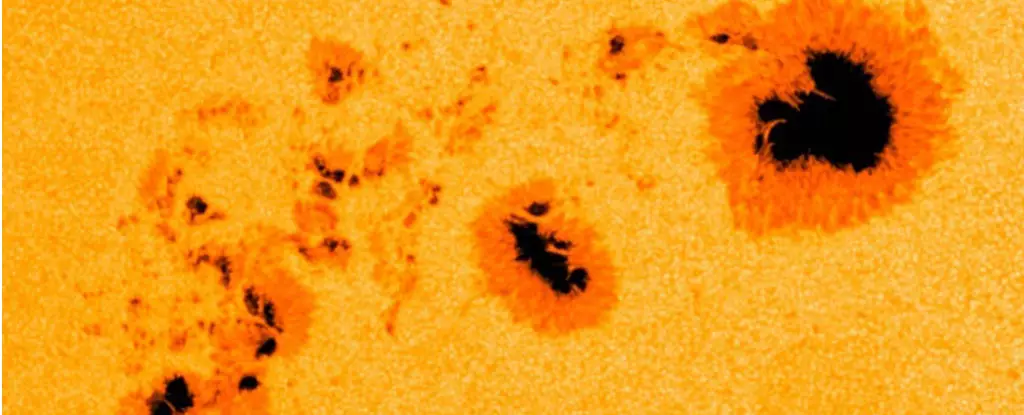Throughout history, the Sun has held an esteemed position in the lore and traditions of multiple civilizations. Revered not merely as a celestial body, it has been viewed as an essential force igniting the cycle of life. Its rays, heralding the arrival of spring, coax plants from their dormant state in the soil, leading to the fruitful harvests that supported ancient societies. The Sun’s influence extended beyond agriculture; its position sparked fascination that intertwined science and mysticism. Ancient navigators relied upon the Sun’s position to guide them, while early scholars of astronomy pondered its nature, leading to advances that eventually unraveled its enigmatic qualities.
The scientific exploration of the Sun commenced in earnest during the Renaissance, significantly impacted by the invention of the telescope. Galileo’s observations in the 17th century brought forth the revelation of sunspots—dark blemishes on the Sun’s surface, indicating a more complex atmosphere than previously understood. His laborious documentation of these spots not only shed light on solar rotation but also initiated a trend toward systematic observation. Despite his rudimentary magnetism experiments, the connection between sunspots and solar phenomena remained largely unexplored until centuries later.
Research took a significant turn when William Gilbert, the court physician of Queen Elizabeth I, published groundbreaking work on magnetism in 1600. Gilbert’s assertion that the Earth itself functioned like a giant magnet laid the foundation for understanding the Earth-Sun relationship. It piqued the curiosity of astronomers and physicists, creating a platform for future exploration into the magnetic nature of the Sun and its effects on Earth.
The late 19th century was pivotal in unraveling the complexities of solar phenomena. Richard Carrington’s dramatic observations in 1859 during an astronomical event revealed an abrupt solar flare, marking a significant milestone in solar research. This solar flare unleashed a series of geomagnetic disturbances on Earth, culminating in the Carrington Event, which captivated scientists and the general populace alike. The visible auroras displayed worldwide beckoned attention to the interplay between solar activity and terrestrial phenomena, igniting a quest for deeper understanding amid growing fears of technological vulnerabilities.
In the following decades, George Ellery Hale became instrumental in advancing our comprehension of solar magnetism. His studies indicated that the powerful magnetic fields present in sunspots were generating waves of energy capable of triggering coronal mass ejections. Hale’s work established the paradigm of solar-terrestrial interactions, demonstrating that the Sun’s magnetic force extends far beyond itself, wielding a powerful influence on Earth’s magnetosphere.
Integral to understanding solar dynamics is the concept of the solar cycle, a rhythmic pattern traditionally calculated to last approximately 11 years. Through meticulous observation, scientists noted fluctuations in sunspot numbers, correlating these patterns with increased solar activity. However, the Maunder Minimum—a notable 70-year period devoid of sunspots—served as a reminder of solar unpredictability, casting a shadow of intrigue over solar behaviors.
The cyclical emergence of sunspots and the magnetic storms they unleash add both beauty and menace to our celestial realm. The fluctuating intensity of solar storms has implications that ripple through modern technology, as observed during the Carrington Event, raising concerns for our interconnected lifestyle in today’s digital age.
As we stand on the precipice of a new solar peak, scientists observe the resurgence of sunspots and the associated increase in magnetic storms. The inevitable question arises: how will our advanced technology cope with potential disruptions in a world dependent on electricity and connectivity? Scientists argue for increased awareness and preparedness, emphasizing the need for a robust framework that can mitigate damage caused by future solar events.
It becomes evident that understanding these solar phenomena is crucial—not just for scientific curiosity, but for safeguarding modern infrastructure. The interplay of stored magnetic energy and its release during solar events gives rise to breathtaking auroras, mesmerizing onlookers while simultaneously posing potential threats to communication systems and power grids.
The captivating relationship between the Sun and Earth exemplifies the delicate balance that governs life on our planet. As curiosity drives musicians, artists, and scientists alike to explore this intricate dance, the collective longing to understand the cosmos will only intensify. Fostering advancements in solar research will ensure we remain vigilant custodians of our technological landscapes, allowing us to embrace the artistry that nature’s phenomena continue to unveil. Through the lens of scientific exploration, the Sun remains more than a glowing orb; it is a dynamic character in the ongoing saga of existence, its beauty and danger captivating and challenging us at every turn.


Leave a Reply